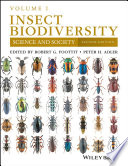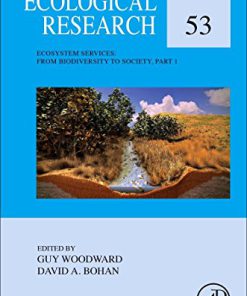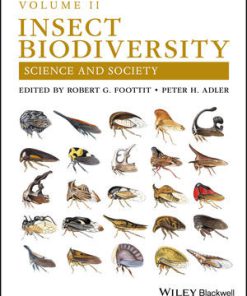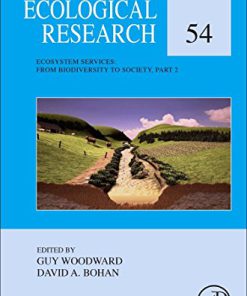Insect Biodiversity Science and Society Volume 1 2nd Edition by Robert G Foottit, Peter H Adler ISBN 1118945530 978-1118945537
$50.00 Original price was: $50.00.$25.00Current price is: $25.00.
Insect Biodiversity : Science and Society, Volume 1 2nd Edition by Robert G. Foottit, Peter H. Adler- Ebook PDF Instant Download/Delivery: 1118945530, 978-1118945537
Full download Insect Biodiversity : Science and Society, Volume 1 2nd Edition after payment

Product details:
ISBN 10: 1118945530
ISBN 13: 978-1118945537
Author: Robert G. Foottit, Peter H. Adler
Volume One of the thoroughly revised and updated guide to the study of biodiversity in insects
The second edition of Insect Biodiversity: Science and Society brings together in one comprehensive text contributions from leading scientific experts to assess the influence insects have on humankind and the earth’s fragile ecosystems. Revised and updated, this new edition includes information on the number of substantial changes to entomology and the study of biodiversity. It includes current research on insect groups, classification, regional diversity, and a wide range of concepts and developing methodologies. The authors examine why insect biodiversity matters and how the rapid evolution of insects is affecting us all.
This book explores the wide variety of insect species and their evolutionary relationships. Case studies offer assessments on how insect biodiversity can help meet the needs of a rapidly expanding human population, and also examine the consequences that an increased loss of insect species will have on the world. This important text:
- Explores the rapidly increasing influence on systematics of genomics and next-generation sequencing
- Includes developments in the use of DNA barcoding in insect systematics and in the broader study of insect biodiversity, including the detection of cryptic species
- Discusses the advances in information science that influence the increased capability to gather, manipulate, and analyze biodiversity information
- Comprises scholarly contributions from leading scientists in the field
Insect Biodiversity: Science and Society highlights the rapid growth of insect biodiversity research and includes an expanded treatment of the topic that addresses the major insect groups, the zoogeographic regions of biodiversity, and the scope of systematics approaches for handling biodiversity data.
Table of contents:
1 Introduction
2 The Importance of Insects
Part I Insect Biodiversity: Regional Examples
3 Insect Biodiversity in the Nearctic Region
4 Amazonian Rainforests and Their Richness and Abundance of Terrestrial Arthropods on the Edge of Extinction: Abiotic–Biotic Players in the Critical Zone
5 Insect Biodiversity in the Afrotropical Region
6 Biodiversity of Australasian Insects
7 Insect Biodiversity in the Palearctic Region
Part II Insect Biodiversity: Taxon Examples
8 Biodiversity of Aquatic Insects
9 Biodiversity of Diptera
10 Biodiversity of Heteroptera
11 Biodiversity of Coleoptera
12 Biodiversity of Hymenoptera
13 Diversity and Significance of Lepidoptera: A Phylogenetic Perspective
Part III Insect Biodiversity: Tools and Approaches
14 The Science of Insect Taxonomy: Prospects and Needs
15 Insect Species – Concepts and Practice
16 Molecular Dimensions of Insect Taxonomy in the Genomics Era
17 DNA Barcodes and Insect Biodiversity
18 Insect Biodiversity Informatics
19 Parasitoid Biodiversity and Insect Pest Management
20 The Taxonomy of Crop Pests: The Aphids
21 Adventive (Non-Native) Insects and the Consequences for Science and Society of Species that Become Invasive
22 Biodiversity of Blood-sucking Flies: Implications for Humanity
23 Reconciling Ethical and Scientific Issues for Insect Conservation
24 Taxonomy and Management of Insect Biodiversity
25 Insect Biodiversity – Millions and Millions
People also search for:
journal of insect biodiversity
why is insect biodiversity important
threats to insect biodiversity
how to sample insect biodiversity
the evolution of insect biodiversity
Tags: Robert G Foottit, Peter H Adler, Insect Biodiversity, Science, Society
You may also like…
Animals & Pets - Insects & Arachnids
Religion & Spirituality
Cookbooks
Biology and other natural sciences - Ecology












